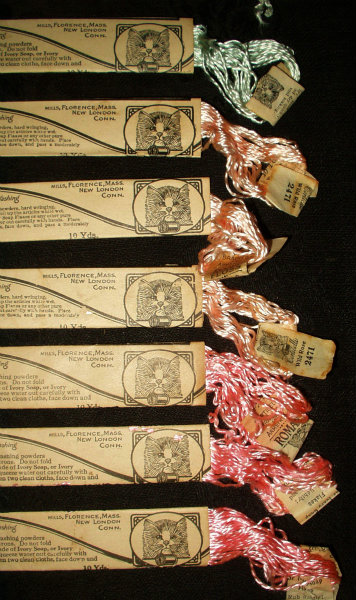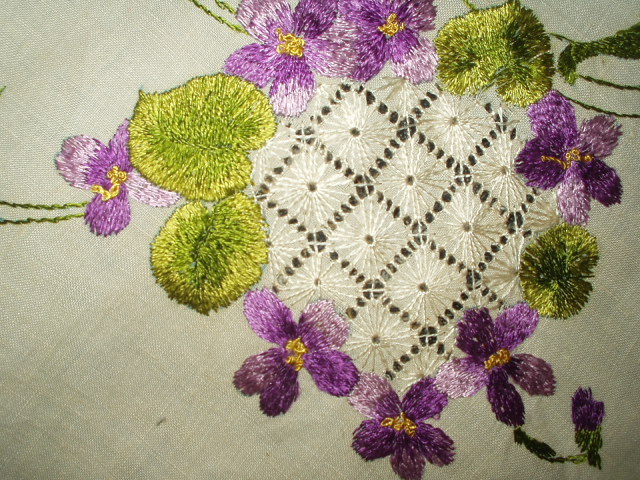Antique silk. How easy is it to wash and should you? Silk is classified as a natural fiber, so by all standards it can be washed, however, a word of caution, here, as there are silks that will not hold up when put to water, especially any of the weighed silks from the mid to late Victorian era. In my experience it is a hard determination on which items can be washed successfully, and which will amount to a handful of shreds when lifted from the water. This is a very sad fact, so if I have the least doubt, I rather not put the item to the water test. I rather have the item dirty than to lose it.
During the Victorian / early 1900's some silk was advertised as "washing silk", such as yardage and clothing. Most of the the silk embroidery floss that decorated all those wonderful society silk doilies, runners, tablecloths & other decorative household items was of washing silk. The color selection of this floss seem endless. I have found most of these textiles do wash very well. But on occasion, some floss is not color fast, so bleeding of colors does occur. If not sure, it is advisable to do a test.
Towards the 1920's and later, I found more silks to be of a washable nature and more sturdy when soaked. Still, do use caution.
If washing silk, soak as briefly as possible. I usually don't soak for more than 10 minutes, but others suggest no longer than one half hour pre-soak. Then, wash in luke warm water with Woolite or Ivory Snow. If using Ivory, dissolve first in hot water, adding it to wash water. Rinse well and roll in turkish toweling until damp dry. Always avoid sunlight as this weakens the fibers.

Corticella embroidery thread floss, still in the original packages, featuring the famous cat. Thread dates from the Victorian Edwardian era.

A society silk embroidery doily. The ever popular pansy is embroidered on the linen fabric. Pulled and drawnwork threads fills the center area. A gorgeous Victorian Edwardian table doily.
